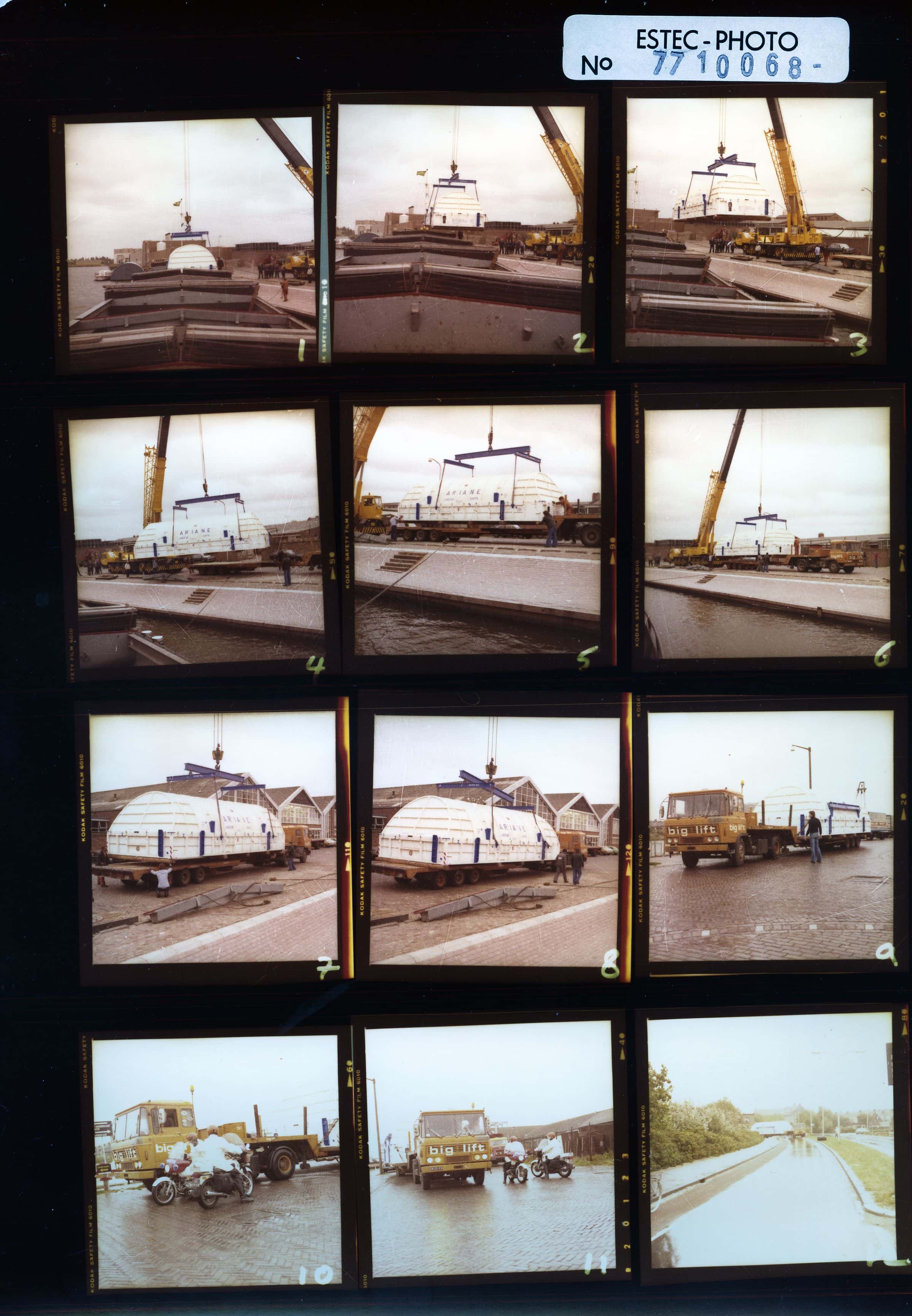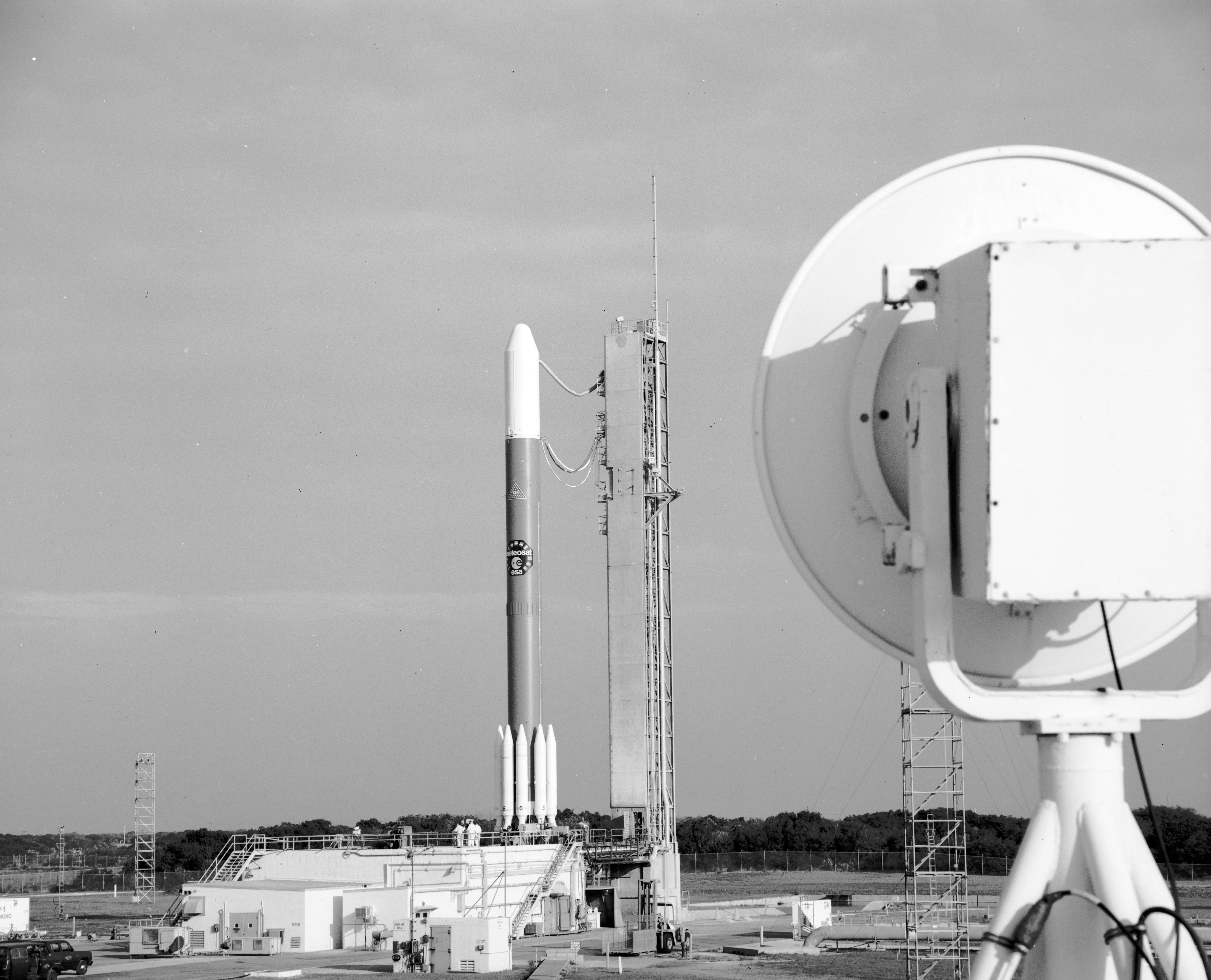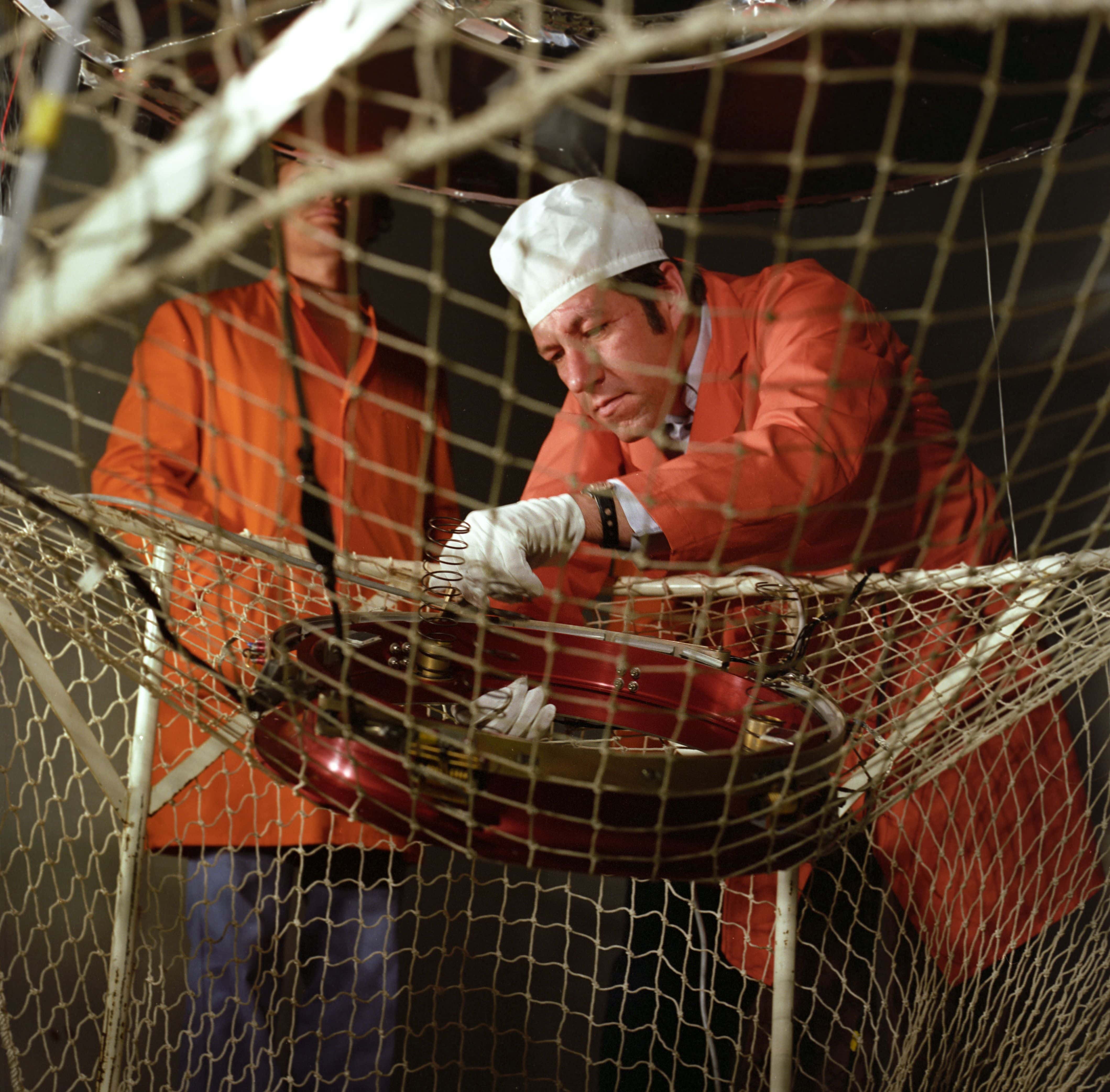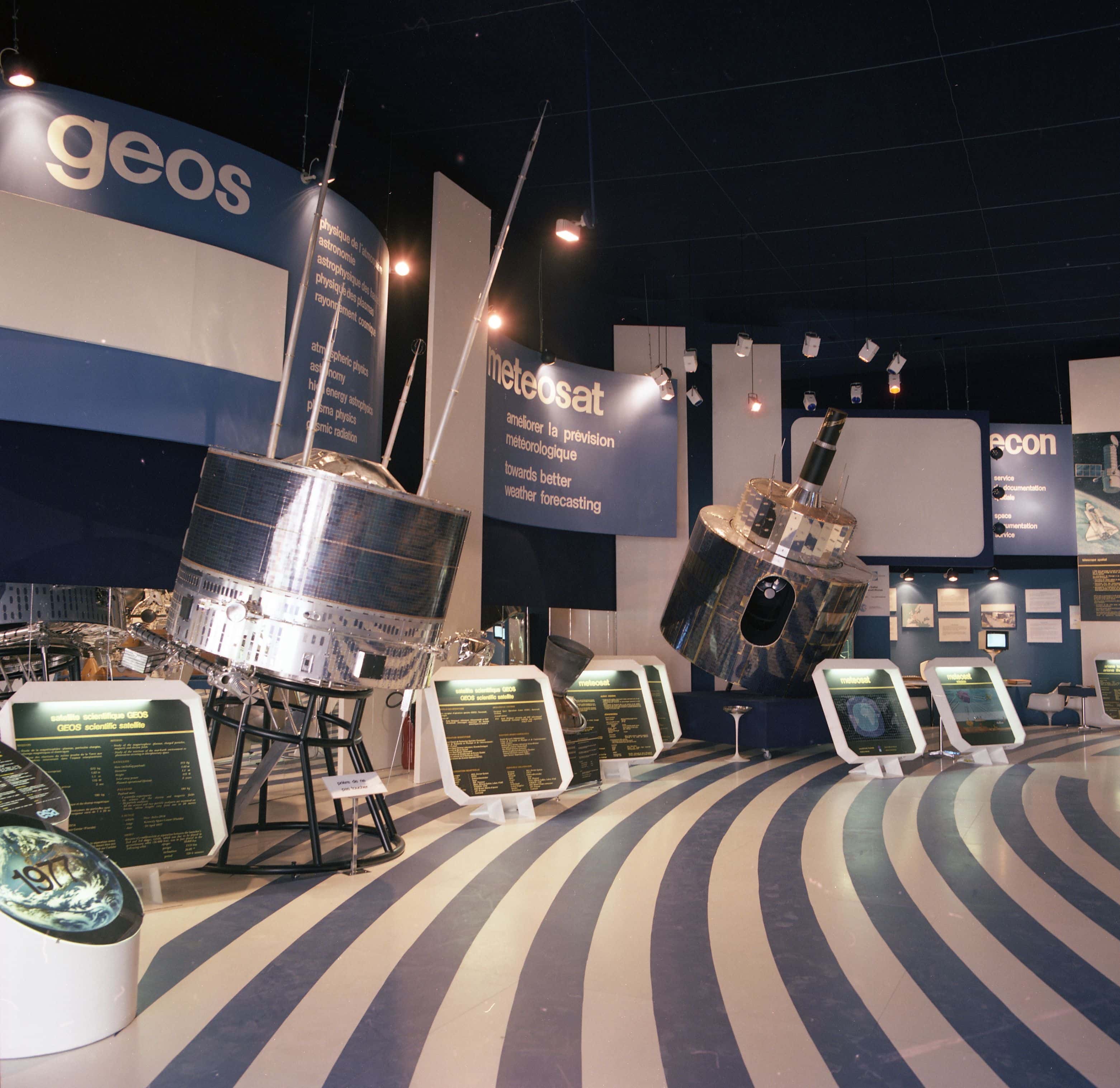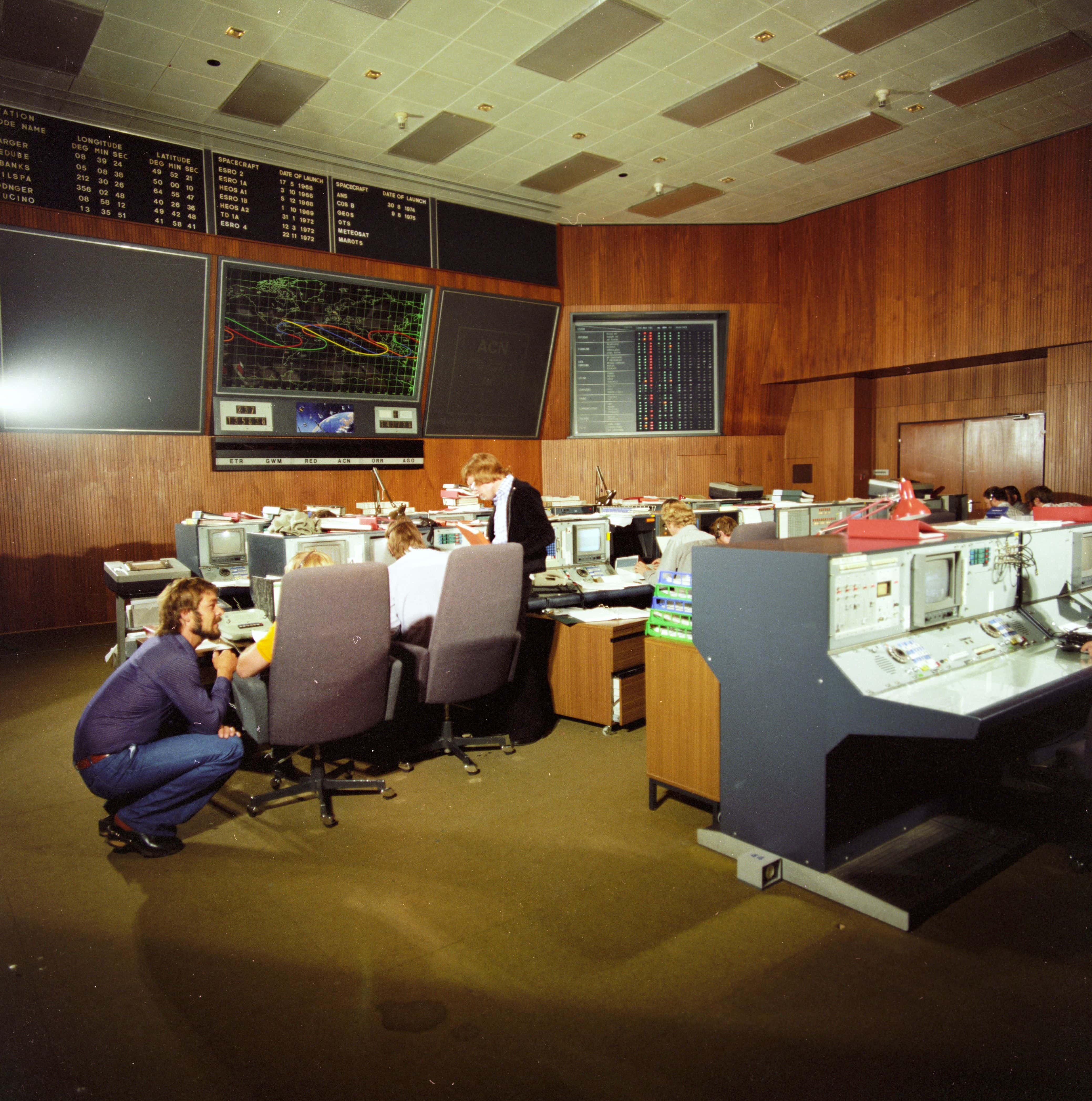At the very end of 2023 the Archives team put the finishing touches to the digitisation of another year in our historical picture collections. As a result, we are delighted to start this new year by opening of the pictures from 1977, which are now available in the SHIP database.
The very first line of the 1977 ESA Annual Report contains the ominous statement (by Wolfgang Finke, Chairman of Council) that the year had been “a difficult one for the European Space Agency”. Director General Roy Gibson went further with a musical analogy which outlined some of the challenges faced: “one could say that 1977 had all the ingredients for a successful Oklahoma-style musical of the 1940s: a spectacular opening (our first Council meeting at Ministerial level); tragedy (our Geos and OTS launch failures); and a more or less happy ending (ISEE-B and Meteosat launches and the December Council meeting)’’.
Later in his report, Gibson talks about an estimated balance of 21/2 satellites out of 4, referring to the loss of the OTS satellite in an explosion minutes after launch in September, and the failure of Geos to reach geostationary orbit following launch in April. While the former was an obvious blow to morale, the wider context of 1977 included two successful launches (of ISEE-B and Meteosat-1) and Geos was manoeuvred into an orbit where it was producing valid scientific data, going on to make a significant contribution to magnetospheric research until its mission ended in 1980.
On the other side of Gibson’s balance, the Meteosat programme was inherited from ESA’s predecessor ESRO and has therefore been part of ESA throughout our organisation’s life, from the successful launch of the first European meteorological satellite in November 1977, through a long-term partnership with EUMETSAT to its third generation satellites of today (MTG-I1, was launched on 13 December 2022). Another emblematic programme is Ariane, with pictures from 1977 documenting the process of transformation for Ariane-1 from paper to reality.
And the year closed on a high note with a press conference for the first ESA astronaut selection, presenting the four European payload specialists who would train for the Spacelab missions: Franco Malerba, Ulf Merbold, Claude Nicollier and Wubbo Ockels.
And returning to music, adversity - in a slightly different sense - was also present with the clash of trends. Punk was enjoying the peak of its success – and controversy – with the Sex Pistols’ version of God Save the Queen in the year of the Silver Jubilee celebrations for Queen Elizabeth II, against the backdrop of the rise of disco and electronic music. As the European Space Agency, Kraftwerk’s March release of Trans-Europe Express is naturally close our hearts and we wonder whether ESA missed an opportunity for an anthem here? (Particularly as just one year later, Kraftwerk would name a track on their album The Man Machine after Spacelab!)
Our counterparts in NASA were also occupied with music during the preparation of the Golden Records launched on the Voyager spacecraft in 1977. The disks contained sounds and images representing the diversity of life and culture on Earth, with Europe represented by Bach, Beethoven, Holborne, Mozart and the Bulgaria folk song Izlel je Delyo Hagdutin sung by Valya Balkanska. It’s interesting to speculate on what we would include today!
More information
To browse the new images, simply search for ‘1977’ in the SHIP database, or refer to our highlight on SHIP for additional details of its functionalities.
Help us with missing descriptions!
Some of the photos from 1977 are missing a title and description – search in SHIP for ESTEC-PHOTO-1977.03.881 to see an example. Do you recognise what we think is the satellite in this packing crate? If so, please use an annotation to tell us more and help us fill in the gaps!

